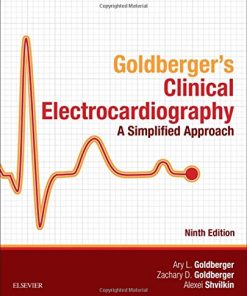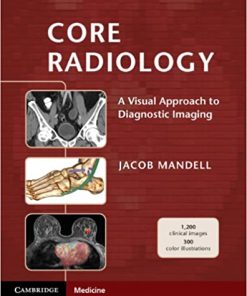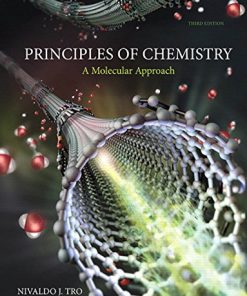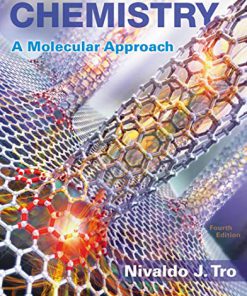Essentials of coordination chemistry a simplified approach with 3rd Visual Bhatt 0128038956 9780128038956
$50.00 Original price was: $50.00.$25.00Current price is: $25.00.
Essentials of coordination chemistry – a simplified approach with 3rd Visual Bhatt – Ebook PDF Instant Download/DeliveryISBN: 0128038956, 9780128038956
Full download Essentials of coordination chemistry – a simplified approach with 3rd after payment.
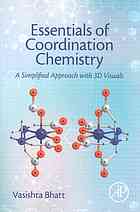
Product details:
ISBN-10 : 0128038956
ISBN-13 : 9780128038956
Author: Visual Bhatt
Essentials of Coordination Chemistry: A Simplified Approach with 3D Visuals provides an accessible overview of this key, foundational topic in inorganic chemistry. Thoroughly illustrated within the book and supplemented by online 3D images and videos in full color, this valuable resource covers basic fundamentals before exploring more advanced topics of interest.
The work begins with an introduction to the structure, properties, and syntheses of ligands with metal centers, before discussing the variety of isomerism exhibited by coordination compounds, such as structural, geometrical and optical isomerism. As thermodynamics and kinetics provide a gateway to synthesis and reactivity of coordination compounds, the book then describes the determination of stability constants and composition of complexes. Building upon those principles, the resource then explains a wide variety of nucleophilic substitution reactions exhibited by both octahedral and square planar complexes. Finally, the book discusses metal carbonyls and nitrosyls, special classes of compounds that can stabilize zero or even negative formal oxidation states of metal ions. Highlighting preparations, properties, and structures, the text explores the unique type of Metal-Ligand bonding which enable many interesting applications of these compounds.
Thoughtfully organized for academic use, Essentials of Coordination Chemistry: A Simplified Approach with 3D Visuals encourages interactive learning. Advanced undergraduate and graduate students, as well as researchers requiring a full overview and visual understanding of coordination chemistry, will find this book invaluable.
Essentials of coordination chemistry – a simplified approach with Table of contents:
Chapter 1. Basic Coordination Chemistry
1. Introduction
2. Nomenclature
3. Theories of Bonding in Coordination Compounds
4. Geometries of Complexes with Different Coordination Numbers
5. Crystal Field Theory
6. Splitting of d-Orbitals in Fields of Different Geometry
7. Magnetism
8. Catalytic Properties
9. Exercises
Chapter 2. Basic Concepts of Symmetry and Group Theory
1. Introduction
2. Symmetry Operations and Elements of Symmetry
3. Point Groups
4. Flow Chart for Determination of Molecular Point Groups
5. Exercises
Chapter 3. Isomerism in Coordination Complexes
1. Introduction
2. Classification of Isomerism
3. Structural Isomerism
4. Stereo Isomerism or Space Isomerism
5. Experimental Separation and Identification of Isomers
6. Optical Isomerism or Mirror Image Isomerism
7. Maximum Number of Enantiomeric Pairs in Different Complexes
8. Resolution of Racemic Mixture
9. Exercises
Chapter 4. Thermodynamics and Kinetics of Complex Formation
1. Introduction
2. Stability and Lability of Complexes
3. Steps Involved in Formation of a Complex MLn, Stepwise and Overall Stability Constants
4. Explanation of Lability and Inertness of Octahedral Complexes
5. Factors Affecting the Stability and Lability of Complexes
6. Bases for Detection of Complex Formation
7. Experimental Determination of Stability Constant and Composition of a Complex
8. Exercises
Chapter 5. Reactions in Octahedral Complexes
1. Introduction
2. Potential Energy Curves Showing Energy Changes Involved in Endothermic and Exothermic Reactions
3. Mechanisms of Nucleophilic Substitution Reactions in Octahedral Complexes
4. Mechanisms Involved in Reactions Like Acid Hydrolysis and Base Hydrolysis of Six-Coordinated Co (III) Ammine Complexes
5. Anation Reaction
6. Substitution Reactions without M–L Bond Cleavage
7. Electron Transfer Reactions
8. Isomerization Reactions
9. Exercises
Chapter 6. Reactions in Square Planar Complexes
1. Introduction
2. The Trans Effect and Its Applications
3. Theories for Explaining Trans Effect
4. Mechanism of Substitution Reactions
5. Factors Affecting the Rate of Substitution Reactions in Square Planar Complexes
6. Exercises
Chapter 7. Basic Organometallic Chemistry
1. Introduction
2. Nature and Types of Metal–Carbon Bonding
3. Preparation of Metal–Carbon Bonds
4. Classification of Organometallic Compounds
5. Nomenclature
6. Fluxional Organometallic Compounds
7. Applications of Organometallic Compounds
8. Some Organometallic Compounds of Interest
9. Exercises
Chapter 8. Metal Carbonyls
1. Introduction
2. Synthesis of Metal Carbonyls
3. Physical Properties
4. Chemical Properties
5. Bonding in Metallic Carbonyls
6. Infrared Spectroscopy
7. Classification of Metal Carbonyls
8. Mononuclear Carbonyls
9. Polynuclear Carbonyls
10. Structures of a Few Polynuclear Carbonyls
11. Effective Atomic Number (EAN) Rule
12. Catalytic Activity of Metallic Carbonyls
13. Exercises
Chapter 9. Metal Nitrosyls
1. Introduction
2. Bonding in Metallic Nitrosyls
3. Infrared Spectroscopy
4. Classification of Nitrosyls
5. Synthesis of Metallic Nitrosyls
6. Individual Nitrosyls
7. Effective Atomic Number (EAN) Rule
8. Applications of Some Metallic Nitrosyls
9. Exercises
People also search for Essentials of coordination chemistry – a simplified approach with:
essentials of chemistry
essential chemistry chapter 9
essential chemistry chapter 4
essentials of organic chemistry
essential chemistry chapter 7
Tags: Essentials, coordination chemistry, simplified approach, Visual Bhatt
You may also like…
Uncategorized
Biology and other natural sciences - Ecology
Essentials of Landscape Ecology 1st Edition Kimberly A. With
Uncategorized
Politics & Philosophy - Anthropology
Uncategorized




